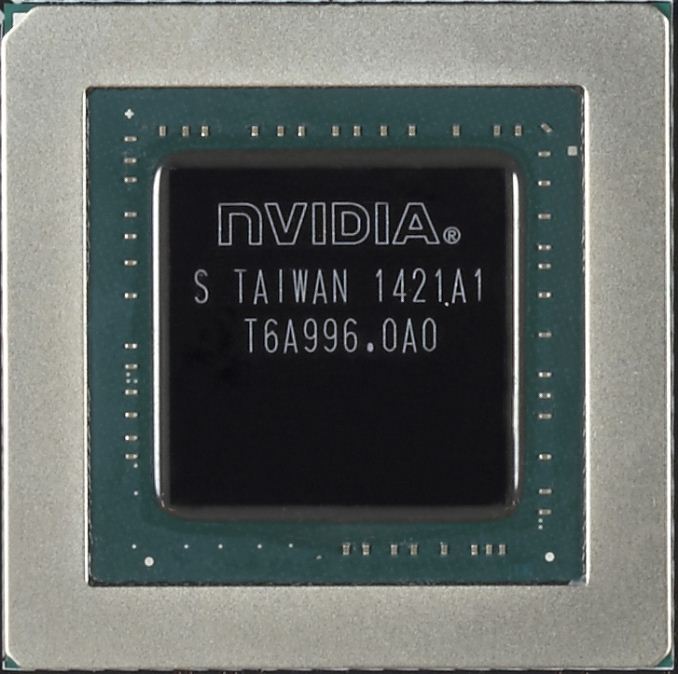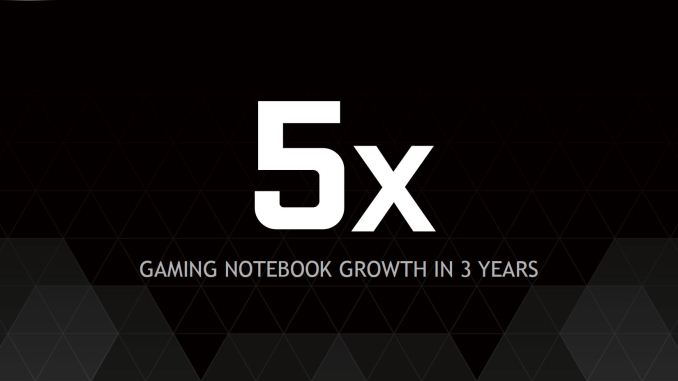NVIDIA GeForce GTX 980M and GTX 970M: Mobile to the Maxwell
by Jarred Walton on October 7, 2014 9:00 AM EST
Every year NVIDIA launches quite a few new products; some are better than others, but they're all interesting. This fall, the big news is Maxwell 2.0, aka GM204. Initially launched last month as the GTX 980 and GTX 970, NVIDIA is hopefully changing the way notebook gamers get treated by launching the mobile version of the GM204 just one month later.
We've already covered all of the new features in the desktop launch, so things like DSR, FXAA, VXGI, DX12, and GameWorks are all part of the notebook launch marketing materials. Of course, as a notebook GPU there are a few extra features available that you don't see on desktop GPUs, mostly because such features aren't really needed. Optimus Technology has been around for several years now so there's not much to add; it allows laptops to dynamically switch between the lower power integrated graphics when you're not doing anything that requires a faster GPU, and it can turn on and utilize the faster discrete NVIDIA GPU when needed. BatteryBoost is a related technology that was first introduced with the GTX 800M series of GPUs, and it seeks to improve gaming battery life. Our test platform at the time didn't really give us the gains we were hoping to see, but NVIDIA assures us that the new GM204 mobile graphics chips will do much better at providing decent battery life while running games. We'll be diving into this in more detail once we get our test notebooks.
Speaking of which, no, we don't have a notebook yet. It was supposed to arrive late last week but ended up shipping Monday instead, which means it should be arriving about the time you're reading this. We'll be posting a separate look at gaming performance as soon as we're able, and we'll have a full review of the MSI GT72 in the coming week as well. For now, what we have are specifications for the mobile versions of GM204 and an overview of what to expect from the mobile versions of NVIDIA's new GPU.
If you've been following the computing industry to any degree over the past few years, a few trends are clearly becoming ever more important. One is that many PC desktop users are migrating to laptops and notebooks, but perhaps just as important is the migration of PC users to smartphones and tablets. There are numerous reasons for the shift – convenience along with increasing performance from handheld devices – but the result is a reduction in the growth of the PC industry. The good news for NVIDIA is that gaming notebooks are still a growing market, though how you define a "gaming notebook" is certainly something that can be manipulated.
NVIDIA's own figures show a 5X growth in gaming notebook sales during the past three years, so clearly there's a demand for getting more graphics performance into laptops. In fact, that's generally the number one desire from notebook gamers: "I want desktop class performance!" NVIDIA is aiming to do just that with the launch of the GTX 980M and GTX 970M.












68 Comments
View All Comments
MrSpadge - Tuesday, October 7, 2014 - link
GTX970M is what the rumor mill says a full GM206 will be. So it's likely nVidia uses heavily crippled GM204 chips for the first batches and later switches to the more economical smaller chip.RussianSensation - Tuesday, October 7, 2014 - link
More disappointing to me is 980M's absence in thin and light form-factor laptops such as MSI GS60 and GS70 models. All the other "laptops" in the list with 980 are basically briefcases/bricks with a screen attached to them. It seems if you want a light and portable 15 or 17 inch laptop that doesn't weight as much as a small printer, you have to get the 970M or 970M SLI in the Aorus X7.xype - Tuesday, October 7, 2014 - link
Hm, what resolution are those NVIDIA numbers from? I guess playing modern games smoothly on a retina MBP—if it ships with these GPUs—is still out of the question?I haven’t checked recently, but do games offer no AA modes for such high resolution screens (and does it make a difference performance-wise)?
DanNeely - Tuesday, October 7, 2014 - link
nVidia is claiming beyond 1080p; and with the desktop 970 (slightly faster than the 980M) generally able to do 1440p with 4xAA while still being playable; you might be able to play in native resolution with AA disabled.On the PC side, AA is almost always a user configurable setting. I'd assume they'd keep the option on mac ports, but don't have one to check.
JarredWalton - Tuesday, October 7, 2014 - link
Sorry, I apparently missed including the "1080p" part before the NVIDIA figures. Yeah, I know -- they're claiming "beyond 1080p" but testing at 1080p. They also target 30+ FPS as "playable", so many of the games coming out now will still be able to run at >30 FPS and 3K+ resolutions, though we might need to disable anti-aliasing in some cases to get there.xype - Tuesday, October 7, 2014 - link
Cool, thanks for the update!xype - Tuesday, October 7, 2014 - link
It’s a setting, but I haven’t seen "no AA" for ages—which kinda sucks if you’re on a retina screen and don’t need it as much in the first place. But the 1440p info is appreciated, that’s the kind of numbers I was wondering about. Thanks :)ClockworkPirate - Tuesday, October 7, 2014 - link
The current iMacs are configurable up to a 780m (not that it's worth the money... :P)ekg84 - Tuesday, October 7, 2014 - link
I really don't think apple would opt for current AMD gpu's, even considering their great openGL performance. Main reason is crappy efficiency compared to maxwell which i think Apple cares big deal about.On another note, i'm looking at those gtx 970m specs and it looks like this is what upcoming desktop gtx 960 could look like, with ramped up clocks of course.
chizow - Tuesday, October 7, 2014 - link
Interesting that Nvidia decided to go with a harvested die at near-full clockspeeds instead of a chip with all functional units intact but with reduced clockspeeds. I guess this does allow them a clear upgrade path for future product lines while retaining a good chunk of GM204's performance.Also, curious what market research you are citing for the increase in gaming notebooks Jarred. Not doubting your assertion, just would like to see for my own interests/curiosity. I guess with Kepler Nvidia did make decent gaming on a laptop possible, but from my own experiences with gaming laptops, they still tend to overheat and underform, while costing significantly more than a higher spec'd desktop. They also tend to lose a lot of the portability.
I guess if I traveled as much for business as I used to, I would be more interested in something like this, but then again I cringe at the thought of lugging one of these things around in addition to my work laptop and my clothes/pullman etc.